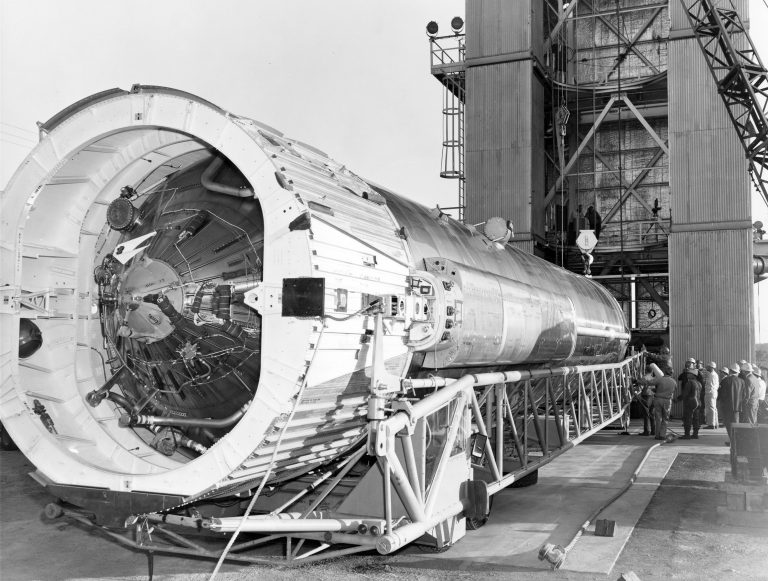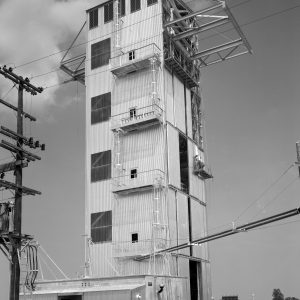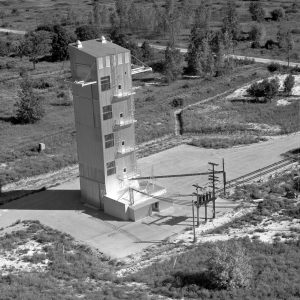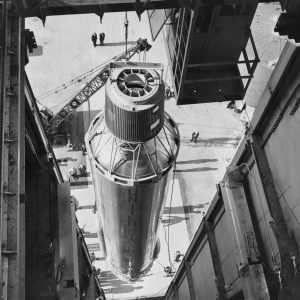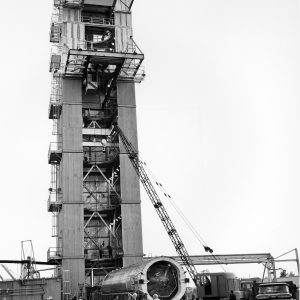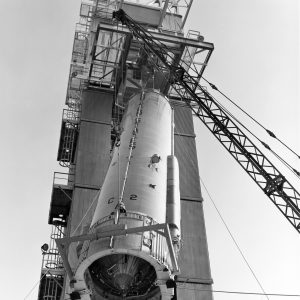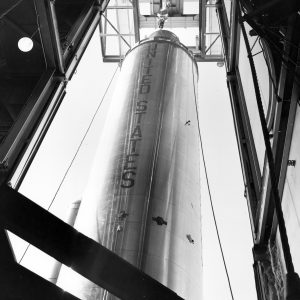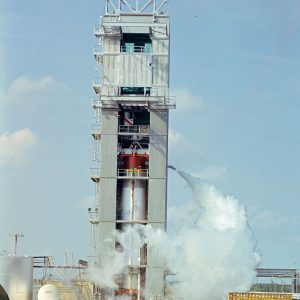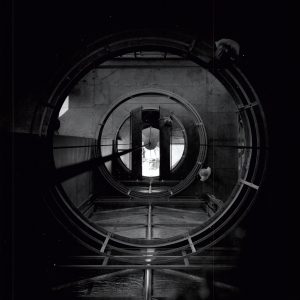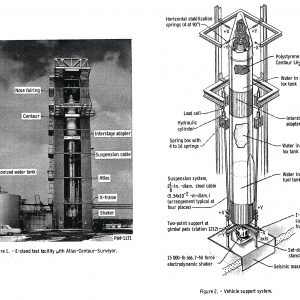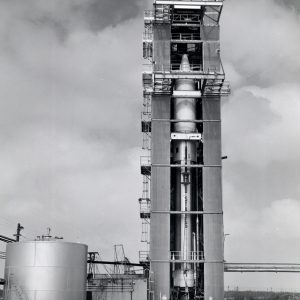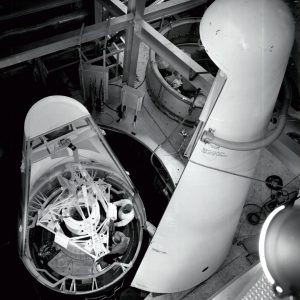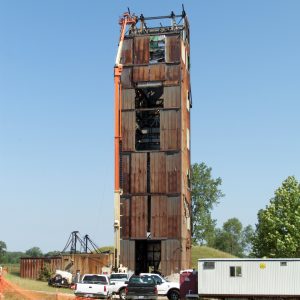E Stand – Dynamics Stand
E Stand was designed to verify the structural integrity of missiles in launch conditions and to study full-scale vehicle pressurization and propellant flow systems. The tower simulated the vibrations and forces that occur during launches without having to fire the engines. Lewis Research Center used it primarily to test the Atlas-Centaur vehicle.
Physical Description: The 7-story E Stand was located on Fox Road in the northwest region of the Rocket Systems Area. It had a 14-ft-diameter test section that ran the length of the seven-level tower. NASA extended the height of the stand from its original 117 ft to 144 ft to accommodate the new Atlas-Centaur vehicle with its payload. There were several work platforms at different levels in the stand. E Stand included an electrodynamic shaker and an I-beam support frame at its base and four spring boxes and load cells that were connected to cables that supported the rocket vertically. A spring at the bottom of the tower supported the rocket from below, and cables supported it from the sides to replicate free flight. The stand includes several fluid systems to study the effect of vibrations on pumping systems. Adjacent to the base of the stand were instrument, control, and mechanical rooms. The tower included a large overhead crane, a 125-ft-tall door, and an elevator. The site also contained a small shop and a large deionized water tank.
Operation: The vehicle was secured to the frame with horizontal and vertical stabilization springs connected to cables that were suspended from the top of the tower. Four spring boxes and load cells were connected to cables that supported the rocket vertically. A large vibrational exciter shook the rocket from below with 15,000 lb of force and a 200-lb exciter provided horizontal force. The exciters were actuated by a power amplifier in a concrete block house beside the tower. The facility was operated from the Central Control Building located 1000 ft away.
Tests: Researchers used E Stand extensively to subject the Atlas/Centaur launch vehicle and its Surveyor payload to dynamic lateral and longitudinal forces. Notable achievements include verification that the Atlas could support the Centaur stage and testing the vehicle’s resilience after purposely bending the vehicle. Researchers also used E Stand for the vibration testing of smaller items, including the Mercury Evaporation and Condensing Analysis (MECA) payload, instrumentation for the Sky Bolt rocket, and a Ranger payload accelerometer.
- 1962 Vibrational analysis on the Space Electric Rocket Test (SERT) I, Ranger accelerometer, and Sky Bolt instrumentation
- 1962–63 Vibrational analysis on MECA program
- 1963 Atlas load tests
- 1964 Atlas/Centaur longitudinal and latitudinal dynamics
- 1965 Centaur fairing loads
- 1966 Atlas/Centaur post-wrinkling strength
- 1967 Atlas/Centaur bulkhead and duct dynamics
- 1968 Atlas/Centaur duct dynamics
Documents
- E Stand Description and Floor Plans
- E Stand Status Reports (1963-68)
- E Stand Construction articles (1959-60)
- Atlas-Centaur-Surveyor Longitudinal Dynamics Tests (1967)
- Experimental Longitudinal Dynamics of Atlas Vehicle (1968)
- Experimental Lateral Bending of Atlas-Centaur-Surveyor (1969)
- Bending Strength of Atlas Booster Beyond Skin Wrinkling (1969)

